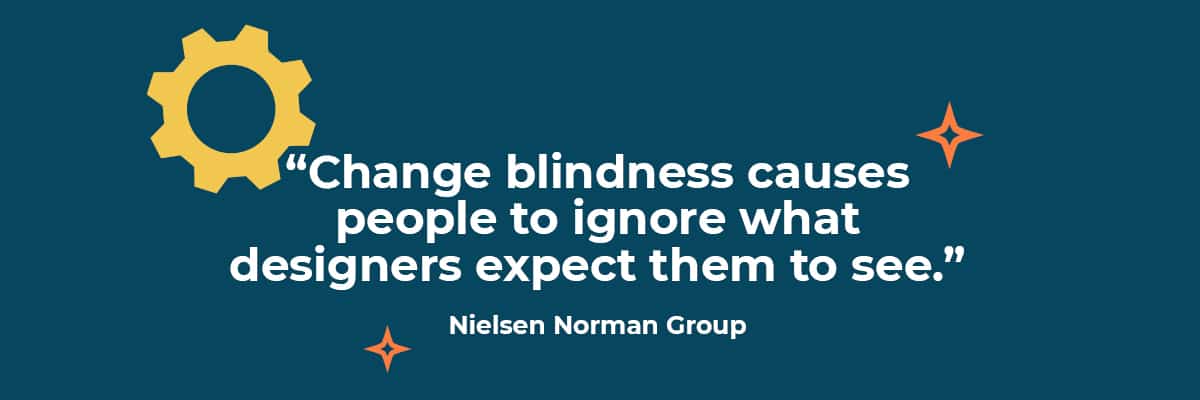May 1, 2019
Kelsey Way
User ExperienceWeb DesignWeb Development
How To Apply Psychology Principles To Mobile UX Design
It’s no secret that mobile usability is becoming more and more important today. Search engines are using it as a ranking factor, and people often judge businesses based on their websites and mobile apps.
That means the role of the mobile UX designer is also becoming more critical. The good news is, modern UX design isn’t a guess - it’s a science, and human psychology has a major role to play in how users interact with your website, mobile app and online brand.
Mobile UX Design Goal: Achieve Simplicity
Most UX researchers and designers agree this is the #1 UX best practice for websites and mobile apps - keep it simple. When you’re designing for mobile, your goal is to make the users’ path to conversion as easy as possible. When a users’ task is simple, they’re more likely to convert, and they’ll have a better experience, which can lead to more brand loyalty in the future. Here are a few psychology principles to keep in mind the next time you’re designing for simplicity.
1. Mental Models
Our brains are capable of processing complex information, but we don’t want to think too hard if we don’t have to. It’s human nature to choose the course of action that will use the least amount of energy and brainpower. That’s where the concept of mental models comes into play.
What’s A Mental Model?
The users’ mental model is what they expect from your website or product based on their past experiences with similar websites. For example, let’s say you’re trying to purchase tickets for an upcoming concert on a website or app you’ve never been to before. Because you’ve done this in the past, you already have a general idea of what that site will look like and how the process will work. You have a mental model of purchasing tickets on a mobile site or app, even if you’ve never done it on this specific one.
How To Apply Mental Models To Modern UX Design
When designing for mobile, you never want to stray too far from the users’ mental model. When you do, you’re asking them to re-learn how to complete a task they already know, which takes away the simplicity. The functionality and design of your website or mobile app can still be unique and use the latest UX design trends; however, the most important tasks should not confuse the user for the sake of creating a new and flashy design.
2. Change Blindness
Have you ever tapped a button thinking nothing happened, only to see the change happened so quickly that you missed it? This is known as change blindness. In mobile web design, change blindness occurs when a visual change takes place but the user doesn’t notice. This could be the page reloading, missing a cue from blinking, an alert message that isn’t clear and other changes in visual details.

How To Apply The Concept Of Change Blindness
It’s all too common that forms are designed in a way that doesn’t properly alert users to errors or successes due to change blindness. If your alert to the user, such as a red notice that the user left a required field blank, isn’t obvious, it won’t get noticed. This causes confusion and again, takes away the simplicity of converting.
On mobile, you don’t have as much real estate to work with, and you have to fit a lot of information on the screen. This gives you less room to bring attention to changes that occur on the page, but it’s an important usability principle.
3. Dual-Coding Theory
Use the dual-coding system to make your website, mobile app and content more memorable to users. According to the dual-coding theory, memory has two systems: one for verbal information and the other for non-verbal information. This means that when you pair visual and text information, it can improve memory and learning.
People picture images for words in their minds based on what they know from the real world. For example, if you think of the word “house” your brain probably automatically imagines a pointed roof above a square with a door or something along those lines.
How To Apply The Dual-Coding Theory
On mobile devices, users are typically looking to complete their task even more quickly than on desktop. When designing a website or application for mobile, pair icons or images with text, instead of only using one or the other, to help users retain the information.
Mobile UX Design Goal: Make A Good Impression
Did you know 88% of online consumers are less likely to return to a site after a bad experience? Today, businesses are often judged by what their websites look like and how they perform. That’s why it’s critical to make a good impression. These psychology principles impact how the brain determines first impressions and what you can do to create positive ones.
1. Visceral Reactions
Have you ever visited a website that was so visually appealing, you didn't want to leave? On the flip side, you might have visited sites in the past that made you want to immediately find another option because of its dated design.
This feeling is a visceral reaction. It’s an instinctive response to an experience that we don’t think about. When it comes to website UX design, eliciting positive emotional reactions through your design will keep visitors coming back. Users make an automatic, split-second decision to determine how they feel about a site or app. If users enter your site and don't feel an instantaneous positive reaction to the design and content, they may not stick around for too long. A negative impression can even send these potential customers straight to a competitor's site.
How To Create Positive Visceral Reactions In UX Design
A positive visceral reaction will likely lead to a positive behavioral reaction, such as spending more time on your site or making a purchase. Even if a user doesn't end up converting, but they enjoyed your site and explored multiple pages, there will still be a benefit to your brand image. So how can UX designers create positive first impressions? Fonts, colors and imagery all play a role in how users feel when they arrive on your site. Use fonts and colors that are easily recognizable and complimentary to each other. When incorporating photos and images, make choices that users can relate to emotionally and ones that remind them of themselves.
2. Ockham’s Razor
Ockham’s Razor is a psychological principle that says the simplest explanation is probably the most likely and the best choice if there are other options.

How To Apply Ockham’s Razor To Mobile Design
When putting this principle in the UX design mindset, it’s a warning against complicated design and content. When you make your design too complicated, you’ll leave users with a poor impression of your business and your products or services. Essentially, this means the simplest solution is always the best.
3. Hick’s Law
Hick's Law is well-known among designers and web developers. This psychology principle states that more choices lead to an increase in the amount of time and effort it takes to make a decision. Imagine you’re sitting in a restaurant, looking at a massive menu. It takes a lot more time and effort to narrow your options down than if you had a list of the day's specials, and most people have been in the situation when they've had to ask for more time from the waiter.
How To Apply Hick’s Law
On a mobile website or app, it's essential for users to feel confident and at ease, not confused, as they complete their task. This psychology principle is why having a small number of options for website visitors reduces friction and keeps users more focused on their task and more likely to convert. Minimize choice by making the primary next step very clear to the user, and removing links, buttons and content that isn’t essential.
Boost Your Website & App Performance With Mobile UX Design
By understanding how users think and process information, you can design a mobile site or app that is memorable and improves your company's bottom line. If you’re ready to craft a mobile experience that turns potential customers into loyal customers, the UX consultants and mobile app developers at Blue Compass can help. Contact us today to learn more!
Related Articles: